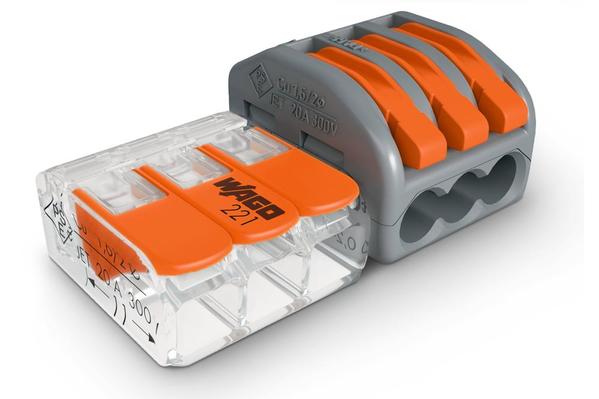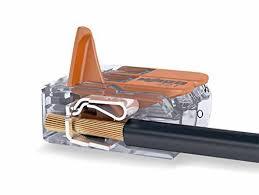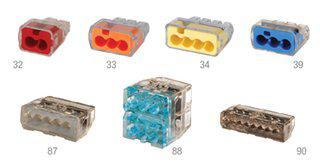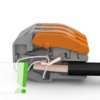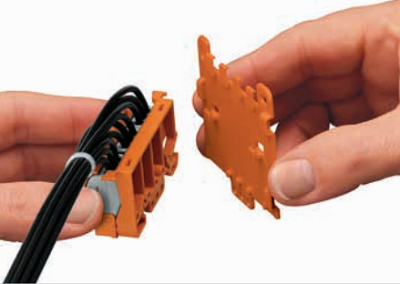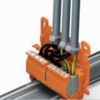I have used Wago Lever nuts extensively for DIY electrical work. I don't think I will ever go back from this connection method. I have used the 222 line and find them indispensable. Given their straight-in design, there is zero stress on the wires and the resulting connection is much easier to work into a junction box because the wires are not physically twisted into a stiff bundle with a cap that extends further. The conductors can actually rotate independently to adjust the final resting position of the connector. You can add one conductor at a time and firmly lock each independently into place. Each conductor can be a different gauge with an equally-firm connection.
I have used them on 12 gauge solid and 14 gauge solid and stranded wire (although I typically tin stranded wire with solder). I find the quick-connect, quick-disconnect, ZIF (Zero Insertion Force) operation to be the most-important feature that makes them worth every penny for a DIY project. Making or breaking the final fixture connection, especially for heavy light fixtures and ceiling fans, is a one-handed, snap-lock operation instead of a two-handed gathering and twisting operation. If you are alone and on a ladder, this is a huge benefit. When you come back one day to replace that light fixture, you will love how easy you have made this for yourself (or the next owner with different aesthetic taste).
If you are replacing outlets and fixtures in middle-of-run boxes, you can convert series wiring to parallel wiring that locks the electrical circuit connections into place and adds single pigtail connections to each outlet. This further simplifies the installation or future work on the outlet. It also isolates downstream outlets from an issue with a single outlet.
Especially on existing-work projects where you cannot see what's in the wall, isolating conductors to identify the cables is a key operation. There is a test-point opening to allow conductivity testing without removing the connector. Lever Nuts are perfect for impromptu wire caps, allowing you to safely tuck a partially-completed project into the junction box and re-energize the circuit if necessary.
No matter how much planning and research I do, as a DIY'er who can go months or years between wiring projects, final testing of modifications will eventually uncover a wiring problem. The time savings when troubleshooting circuit problems are significant. Disconnecting the wires to re-test and reconfigure the circuit with zero additional strain or bending of the wire ends is another huge benefit, especially when working with conductors that have been cut too short by prior electricians or DIY'ers, or on old wiring with insulation that has become brittle. And unless you have developed serious skills with lineman's pliers, making a firm mechanical connection on up to five conductors is far easier and requires less physical strength than traditional twisted wire nut connections.
There exists a newer 221 product line with connectors that are 40% smaller. I have never used them, but I expect equally-great results from a nicer design. This line comes at a higher per-connector price, so I see no essential need to use these connectors unless you are starting from scratch or have an extremely tight volume to work within.
As for reliability, these are broad surface-area connections (as opposed to edge connections on push-in connectors) that will not fail even under extreme conditions. I have watched videos of Lever Nuts of both styles passing 120 A of current and maintaining their electrical connections firmly. The wire insulation burns away long before the Lever Nut casing melts away, but the physical wire connection remains completely intact.
Source the product well, because pricing varies quite widely from vendor to vendor. While professional electricians who want to extract every possible bit of profit from their jobs may stay with the cheaper connection methods, I gladly pay the approximately $0.60 to $1.50 extra cost per outlet to gain the convenience and benefits of using Wago Lever Nuts. Anyone who comes across your work in the future will thank you profusely for making their lives easier.
P.S. I see a question regarding the usefulness of these connectors with very-small-gauge wire. I can see how this would matter a lot to hobbyists such as yourselves in low-current, low-voltage applications. My suggestion would be to tin smaller stranded wires, and if the wire is smaller than 28 gauge, solder a small length of a larger gauge wire to the leads and use that in the Lever Nut. I imagine that could be almost as short as the depth of the connector itself, but that might hide a strain-induced connection issue. If you have room for the connector itself, this ought to make the connections sound.
I hope this helps.

